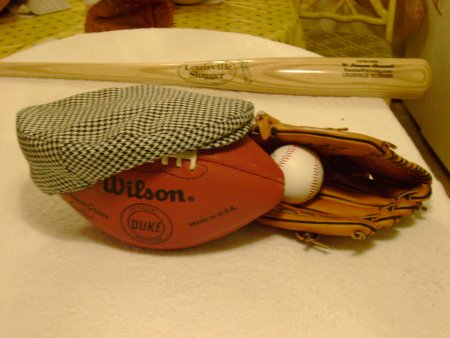Little League Pitching
Pitching Hard While Young Poses A Serious Threat
For Future Pitching
Many Young Players Destroy Their Potential
Pitching Greatness

Little League Pitching is a very very serious matter and the Little League baseball rule book has more rules pertaining to pitching than any other part of the Little League game.
What is it about this part of Little League Coaching which is so critical, well plain and simple, it is the pitching arms of the young players and the knowledge to coach the true basic art of pitching which is control?
A youngsters arm is not designed naturally nor biologically with the physical structure to withstand the rigors of over extended pitching activity.
Some kids at an early age and when reaching that 10 to 12 year age threshold are bigger and stronger than their peers or teammates. Now given this advantage it is so natural that these larger kids can throw harder faster and with more real zing.
Seeing this attribute in a player it is a natural progression of coaches to allow these kids to be the pitcher and having an advantage against the opposing players as hitters. This allowing of the biggest and most overpowering throwers to pitch for wins is potentially a bad omen in the game of Little League Baseball.
Shall we back away from this winning syndrome and focus upon the hazards of letting these kids which are capable of out performing their teammates at this pitching phase of baseball. We need and must know even though some kids are bigger and stronger does not equate to their invincibility of seriously harming their body and in particular their arm.
It is a medical fact that the very act of pitching a baseball, throwing with all the power available within ones stamina and body, is a harmful action to many body parts and in paticular of the pitching arm.
The body of an athlete needs conditioning to withstand the rigors called upon for maximum performance. This thing we know as pitching by baseball pitchers places a premium upon making sure the throwing arm is conditioned well.
Be assured every element of conditioning known in the world for athletes will not overcome the too early to vigorous indulgence of young and tender body parts. There is the rub for Coaching Little League baseball pitching the kids at the age of 12 years of age do not have the body maturity and muscle strength to cope with over stressed pitching rigors.
Given the danger of over taxing the throwing arms of these youngsters we still within the game of Little League see it happen. Through the years we have witnessed the loss of many potential future pitchers by allowing the reckless early age use of overpowering pitching achievements.
The Coaching Little League Pitching has the mantle of burden to protect our Little League youngsters.
After having said all of the above with stern warning trying to emphasize the not yet fully developed body and strength of the arms of ten and twelve year olds boys will be boys.
The pitchers want to experiment and know how the pros in the semi-pro and big leagues and the high school kids hold grip and throw those baseballs which zip dip and dive.
It is best these little league pitchers learn the fundamentals of how to grip and hold the ball to ever achieve this art of pitching.
Here two of the basic baseball pitching grips are explained:
Four seam fastball: You want your fingers a little bit apart. Preferably on the other (or far) side of the seams so when the ball comes out you have resistance of the fingers on the seam to throw against. It's firm with the fingers but the wrist should be somewhat of a supple or flexible wrist you do not want the wrist to be stiff. The thumb gripping underneath the ball should be placed almost to bisect the index and middle finger. The movement would be straight. Four seams rotating out of your hand. The guys who throw hard, it's going to seem like the ball takes off or hops.
Curve ball: Usually, it's this middle finger, inside a seam. And what you want to do is throw it like a fastball to here [where the elbow and arm form an L, with your arm perpendicular to the ground], you turn your hand in. You're now will be pulling down the front of the ball, trying to increase the rate of rotation or spin. With your arm in the L shape configuration as you turn your hand you want to pull down (like flipping the wrist) so you impart as much spin as possible as the ball leaves your hand.
The curve ball throwing should not be a part of the Little League pitching game. WHY ! Those young arms are not yet developed strong enough to take the stess and strain of twisting those muscles and tendons to the limit.
The precipitous increase in the number of arm injuries by pitchers prodded Little League International to establish its new rules, which affects over 2 million players in leagues worldwide. Orthopedic surgeons nationwide have been performing scores of complicated elbow and shoulder operations on young pitchers — procedures once reserved for adults. The cause, surgeons say, is overuse: too much over stressed pitching for developing, young arms.
Bones of our young baseball players are growing to maturity from the ends of the bones and from the bone ends we have what is called growth plates-which are soft when the kids are young and harden as they age. These bone growth plates are significantly vulnerable and susceptible to injury of our young pitchers.
The most vulnerable area of a pitchers arm is the shoulder and the elbow. The bone growth plates are critcally prone to damage in our young players and are prone to cause crippling damage even to our full grown Major League pitchers.
Little Leagues are establishing new guidelines for our young players hoping to reduce the strain on the tendons, ligaments and growth plates of young growing but not mature players.
The old rules restricted pitchers to six innings (the length of a routine game) in one week or in one game. Now with new guidelines Coaching Little League Pitching is more controlled and recognized for the danger it poses to young pitchers.
The new guidelines are adjusted by age, limiting 9- and 10-year-old players to 75 pitches a game regardless of the number of innings, while 11- and 12-year-olds are held to 85 pitches. The scale increases to 105 pitches for the oldest pitchers in Little League.
Also, there are now rest requirements between outings so that most players are prohibited from pitching for three days after throwing more than 61 pitches or two days after throwing 41 to 60 pitches.
A two-year Little League pitch-count pilot program, and the advice of noted sports medicine specialists, helped Little League arrive at the parameters of the new regulations.
These instituted controls are wonderful change in rule because it puts a damper on the out of control coaches Coaching Little League Pitching.
Report any broken links to Baseballfarming would be a big help please Contact Us.
Take the time now and go pick up some genuine general pointers on the art of pitching.
Batter Up----Let's Play Ball....
If you ever wanted to take advantage of a real deal then look right here:"SBI! is now available for $29.99 per month."
Baseball Equipment and More...

